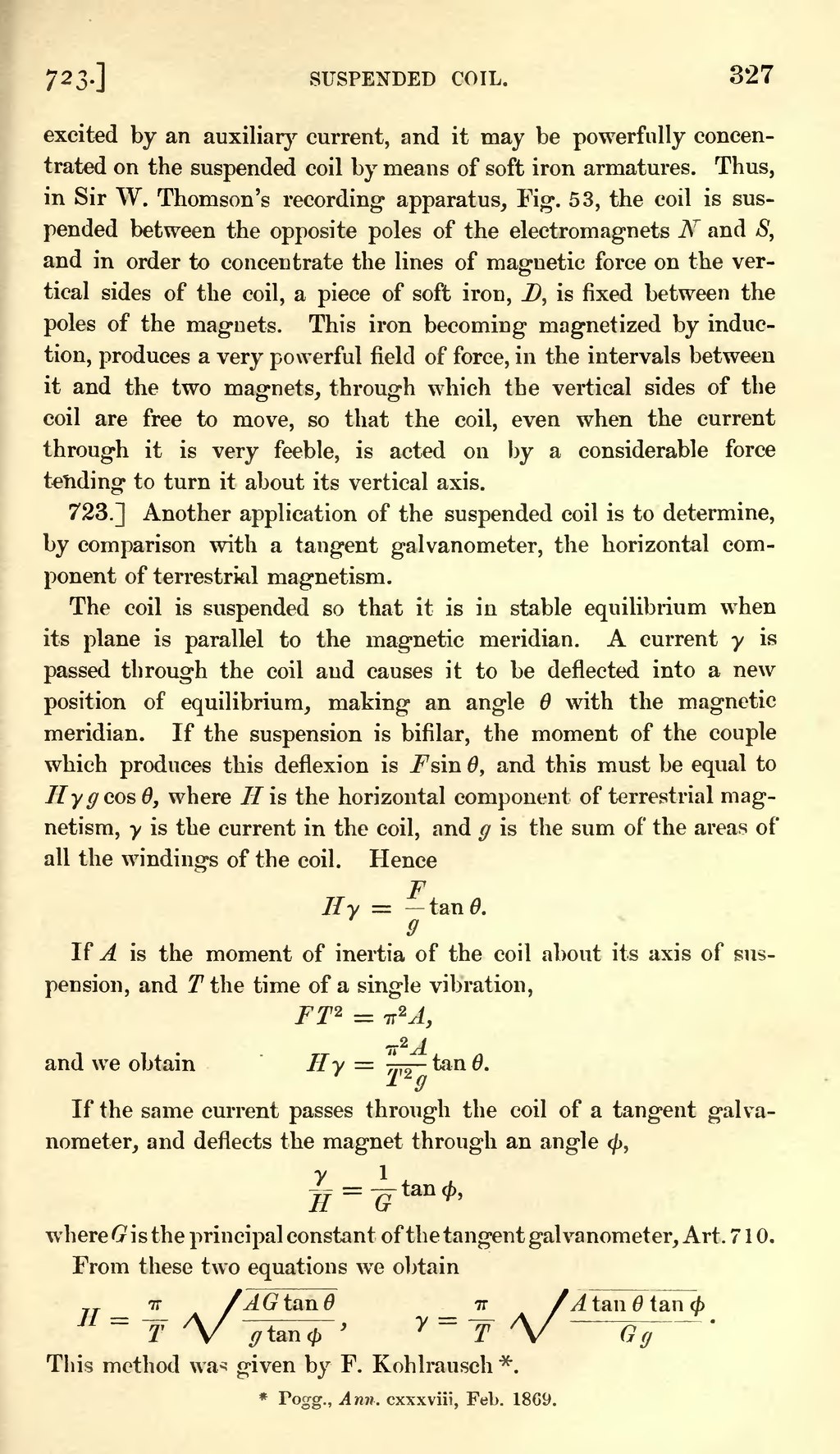excited by an auxiliary current, and it may be powerfully concentrated on the suspended coil by means of soft iron armatures. Thus, in Sir W. Thomson's recording apparatus, Fig. 53, the coil is suspended between the opposite poles of the electromagnets and , and in order to concentrate the lines of magnetic force on the vertical sides of the coil, a piece of soft iron, , is fixed between the poles of the magnets. This iron becoming magnetized by induction, produces a very powerful field of force, in the intervals between it and the two magnets, through which the vertical sides of the coil are free to move, so that the coil, even when the current through it is very feeble, is acted on by a considerable force tending to turn it about its vertical axis.
723.] Another application of the suspended coil is to determine, by comparison with a tangent galvanometer, the horizontal component of terrestrial magnetism.
The coil is suspended so that it is in stable equilibrium when its plane is parallel to the magnetic meridian. A current is passed through the coil and causes it to be deflected into a new position of equilibrium, making an angle with the magnetic meridian. If the suspension is bifilar, the moment of the couple which produces this deflexion is , and this must be equal to , where is the horizontal component of terrestrial magnetism, is the current in the coil, and is the sum of the areas of all the windings of the coil. Hence
If is the moment of inertia of the coil about its axis of suspension, and the time of a single vibration,
If the same current passes through the coil of a tangent galvanometer, and deflects the magnet through an angle ,
where is the principal constant of the tangent galvanometer, Art. 710. From these two equations we obtain
This method was given by F. Kohlrausch[1].
- ↑ Pogg., Ann. cxxxviii, Feb. 1869.



















